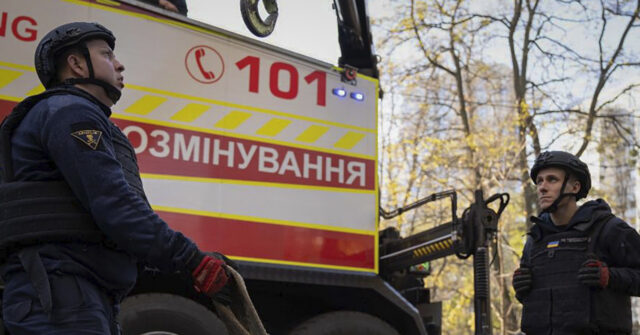On Wednesday morning, the U.S. embassy in Ukraine issued a warning about a potential significant air attack, escalating the tensions between the United States and Russia. The diplomatic compound in Kyiv was closed, with employees evacuated amid fears of imminent violence. Embassy staff instructed U.S. citizens in Ukraine to seek shelter and prepare for possible air alerts, emphasizing the need to identify safe locations in advance. This proactive measure highlighted the precarious situation in Ukraine, which has been embroiled in conflict with Russia for over 1,000 days, and underscored the growing international concern regarding military actions in the region.
The closure of the American embassy was accompanied by similar actions taken by Spain and Greece, with the British government also contemplating the safety of its diplomatic mission. British Minister Peter Kyle noted that the Ministry of Defence is thoroughly assessing the situation and prioritizing the safety of their personnel. Such global caution reflects how critical the security landscape has become in Ukraine, where air attacks on civilian areas have become a regular occurrence since the outbreak of the war. Reuters described the decision to evacuate the embassy as “unusual,” especially considering the tense atmosphere of ongoing air raids, signaling the serious nature of the threat perceived by Western nations.
Despite the heightened warnings, reports indicated that air raids were ongoing throughout Ukraine on the same morning. The specific intelligence prompting the embassy’s closure hinted at a unique threat distinct from the current assaults being experienced across the nation. With air defense systems in Kyiv activated, local authorities advised residents to remain indoors until it was safe to emerge, revealing widespread fear and uncertainty among the populace. This response illustrates the routine nature of air raid alerts in Ukraine, which is grappling with the impacts of a protracted conflict.
In the backdrop of these developments, it was reported that Russia launched a substantial number of drones and missiles targeting Ukrainian infrastructure and cities. Ukraine’s air defense reportedly intercepted a significant portion of these attacks, showcasing the country’s ongoing efforts to mitigate the effects of Russian aggression. However, the deployment of various aerial assaults, including Iranian-designed drones, highlights the complexity of the conflict and the devastating impact on Ukrainian civilians caught in the crossfire.
A particularly noteworthy aspect of this fragile moment in the conflict was Ukraine’s launch of U.S.-made ATACMS ballistic missiles into Russian territory for the first time. Previously, such advanced weaponry had only been deployed against Russian-occupied areas within Ukraine. This shift in strategy, condoned by the U.S., has stirred dire warnings from Kremlin officials who perceive these actions as provocations that could escalate the situation further. The Kremlin’s response reflects a broader concern over increasing Western support for Ukraine and a potential shift in the dynamics of the conflict, emphasizing the stakes for all parties involved.
As the situation unfolds, the international community is left to navigate the complexities of the crisis. The U.S. embassy’s evacuation underscores the gravity of the threat level, while simultaneous warnings from Russian officials create a sense of urgency around communication and diplomatic relations. Both sides are closely observing each other’s military actions, with the potential for escalatory tit-for-tat responses hanging heavily over the conflict. With the precarious balance of power shifting and the conflict continuing to unfold, the repercussions of these actions will be pivotal in shaping the future of U.S.-Ukraine relations and the broader geopolitical landscape.

